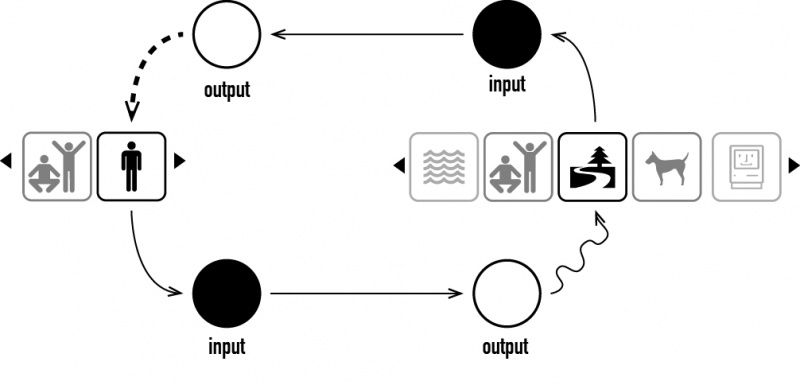project01:Frontpage
Why?
The way we communicate with one another is often based on how much we have in common, how much we know about one another and what language, customs and non-verbal expressions are used. The way we use (sign)language is not something we stop to think about often, but is not so self-evident as we think. This installation's aim is to make you stop and think, wonder and explore, and eventually learn; what was it like to start exploring and discovering communication?
How?
By using an installation in a museum as an intermediate factor, all the barriers that existed between two human beings prior to engaging this piece disappear, as they are now both confronted by the alien language the robot is confronting the user with.
What?
The proposed installation is an art piece located in different museums over the world. The robot you interact with, is translating the gestures and behaviour of the visitors of a museum on another part of the globe. This translation is into the robots' own, abstract language, which the visitors have to explore and discover. The robots themselves might be capable of learning and adapting, so that over the course of the exhibition, different languages start to become more and more alike.
Reference
Performative Ecologies, Ruairi Glynn from Ruairi Glynn on Vimeo.
1. Performative Ecologies ‘Performative Ecologies’ creates an interaction between a series of dancing robots and visitors. Rather than being pre-choreographed, these robots are able to learn how best to attract and maintain visitors’ attention by reading the visitors’ gestures. As the robots gain experience, they can also share their knowledge with each other, dancing to each other and negotiating future performances collaboratively. Reflection: The key part of this interaction is the learning process of these robots, which is achieved by a genetic algorithm. Designers tried to add a kind of artificial intelligence to the dancing robots. But from our perspective, this is still not a true intelligence because the performance of the robots is inevitably constrained by the inner coding which is already choreographed. As a result, visitors could probably foresee the reaction of robots after playing with them several times.2. Constellaction and Light Interventions Both ‘Constellaction’ and ‘Light Interventions’ are constituted by groups of very simple units with light. In the former project, people are allowed to compose these pyramid-units in any way they want and create complicated and strong results. In the latter project, these units are placed ‘randomly’ in anonymous or unnoticed places in city to highlight these places. It is a kind of reminder and redevelopment of these unnoticed spaces without building a true thing there. Reflection: In our opinion, this kind of ‘bottom-up’ design provides more space to people to interact with the products. In the process of interaction, players are designers at the same time. But in these two projects, the variety of performance of these units seems too less.
